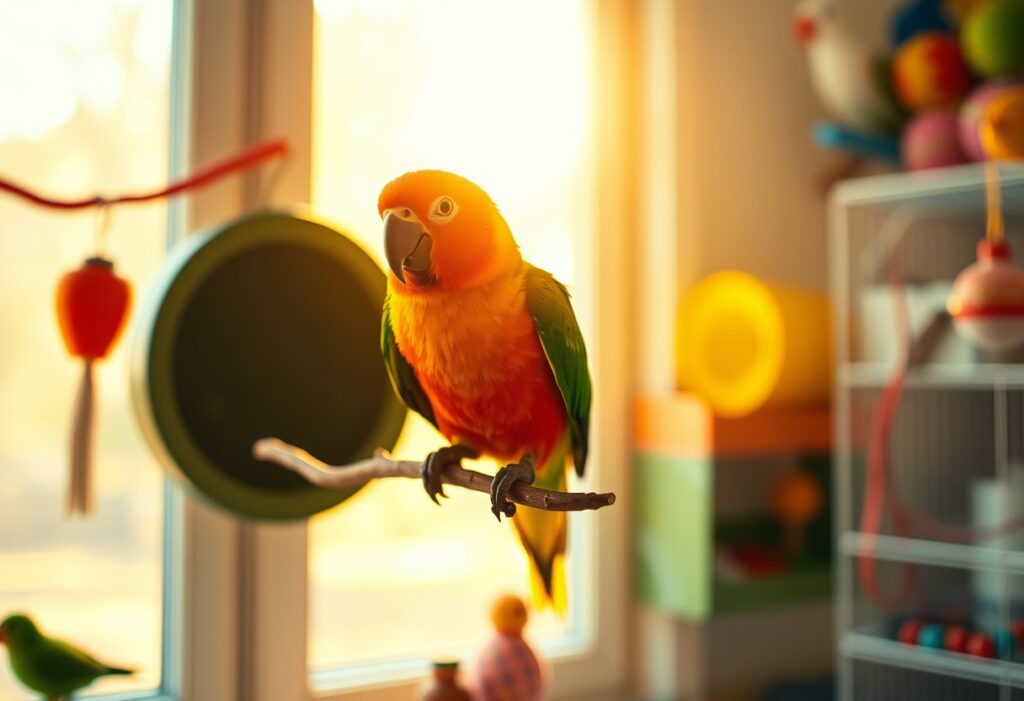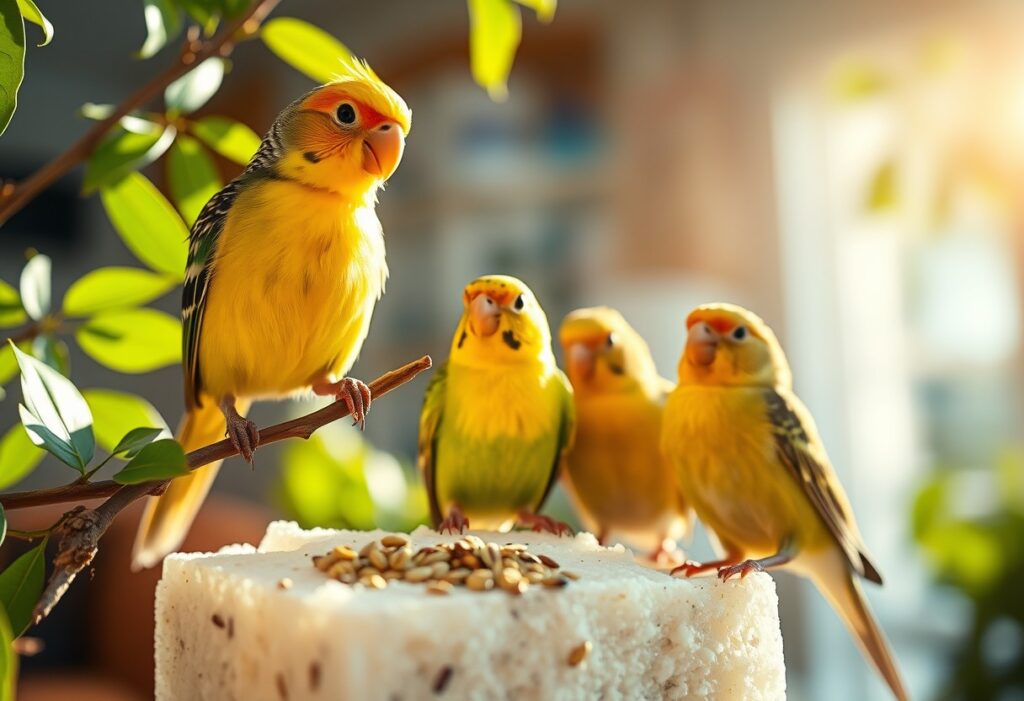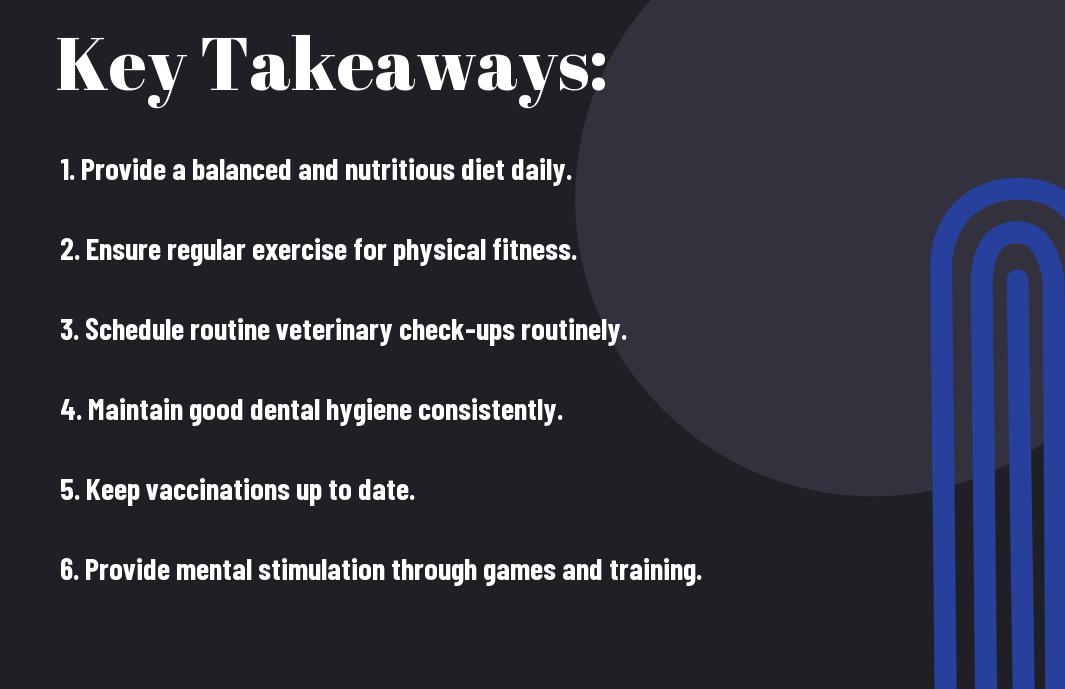Health is a vital aspect of your bird’s overall well-being, and understanding the importance of UV light can significantly enhance their quality of life. Birds rely on ultraviolet radiation for crucial physiological processes, including the synthesis of vitamin D3, which is vital for strong bones and overall vitality. Without adequate UV exposure, your feathered friend may face serious health risks such as weakened immune systems and behavioral issues. This post will guide you through the key aspects of providing safe and effective UV light exposure to ensure your bird thrives.
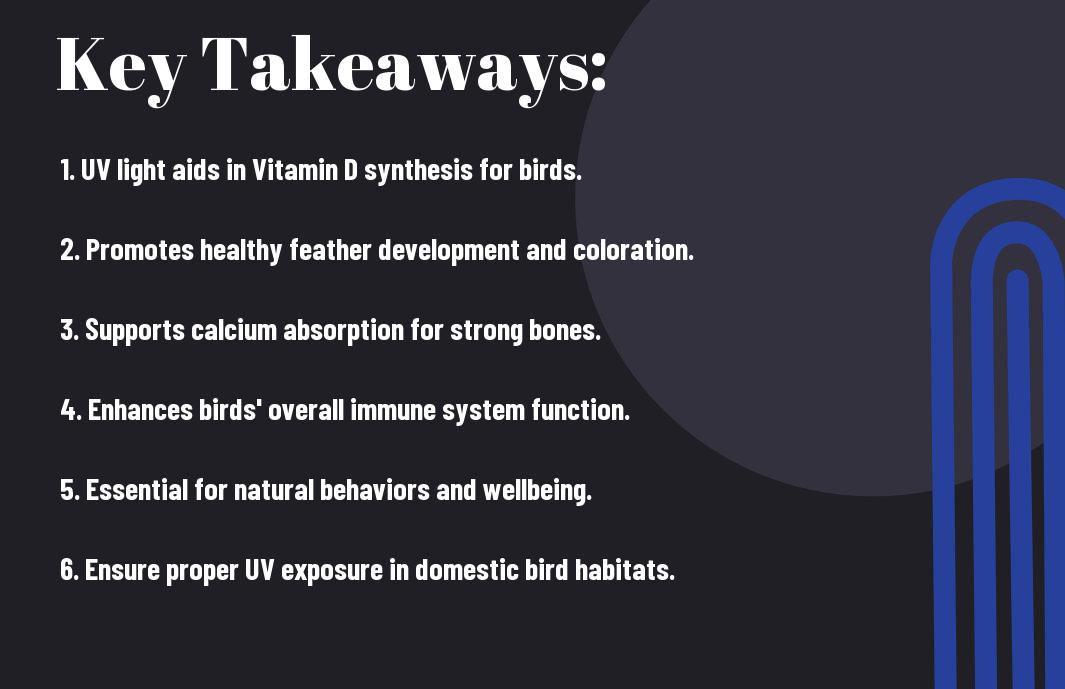
Understanding UV Light
Before delving into the specifics of how UV light affects bird health, it’s crucial to understand what UV light is. This natural phenomenon plays a significant role in the lives of many species, including birds.
What is UV Light?
One of the primary components of sunlight, UV light, or ultraviolet light, is classified into three types based on its wavelength: UVA, UVB, and UVC. UVA rays have the longest wavelengths and account for approximately 95% of the UV radiation that reaches the Earth’s surface. UVB rays are shorter and can be responsible for sunburn, while UVC rays, which are the most harmful, are mostly absorbed by the Earth’s atmosphere and do not reach its surface.
One imperative factor to consider is that while UV light can be beneficial, it also poses risks. For birds, exposure to the right amount of UVB can enhance their calcium metabolism and promote feather development, but too much exposure can lead to adverse health effects. This balance is crucial for optimal health and well-being.
Types of UV Light
One of the critical elements of understanding UV light is recognizing the different types and their respective impacts on birds. The three primary types of UV light include:
| Type | Description |
| UVA | Longest wavelength; involves beneficial aspects like vision. |
| UVB | Shorter wavelength; vital for vitamin D production. |
| UVC | Most harmful; absorbed by the ozone layer. |
| Artificial UV | Can be used in avian habitats to simulate natural light. |
| Natural UV | Sunlight; impacts birds’ behaviors and health. |
With this knowledge, recognize the necessity of moderated exposure to different types of UV rays for your birds. Doing so supports healthy feather regrowth and enhances overall vitality. To ensure your bird receives adequate UV exposure, consider the placement of their habitat in relation to natural light sources.
- UV light types play different roles in bird health.
- Moderation is key to avoiding overexposure.
- Natural sunlight benefits feather growth.
- Artificial UV sources can simulate sunlight.
- Knowing your bird’s UV needs is imperative for its health.
Sources of UV Light in Nature
Light is a predominant source of UV radiation. Your birds interact with UV rays daily, allowing them to harness the benefits provided by nature. Whether it’s soaking up the sun on their favorite perch or wandering freely outdoors, birds thrive when they have access to natural UV light.
Light from the sun offers not just imperative warmth but also crucial nutrients that contribute to your birds’ physical well-being. UVB rays specifically aid in the synthesis of vitamin D, imperative for their bone health and calcium absorption. With the right balance of sun exposure, your birds can experience improved mood and overall energy levels.
Understanding the Benefits and Risks
Understanding the intricacies of UV light is paramount for maintaining your bird’s health. Proper exposure can lead to enhanced feather quality and vitality, while excessive exposure may cause skin damage and an increased risk of cancers. Being aware of these guiding principles will help you effectively manage your bird’s environment.
Hence, providing your birds with appropriate UV light conditions will contribute to their overall health and happiness. Understanding how UV light works and its implications on bird physiology is a crucial step in ensuring a vibrant, healthy avian companion in your life.
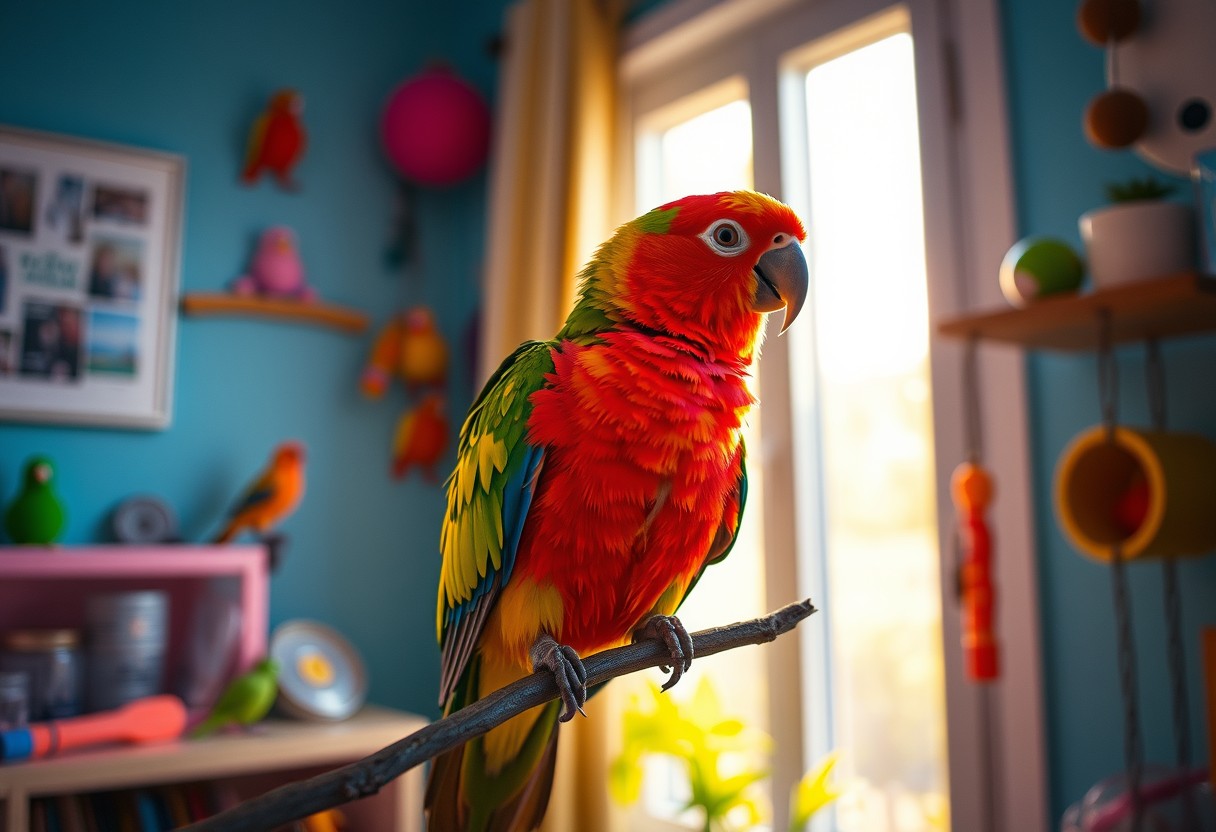
The Importance of UV Light for Birds
Now, it’s important to understand that UV light plays a crucial role in the overall health and well-being of birds. Many bird owners often overlook this vital aspect of avian care, but exposure to natural or artificial UV light significantly impacts your feathered friend’s physiological and behavioral activities. By ensuring that your bird has access to adequate UV light, you can enhance their quality of life and longevity.
Physiological Benefits
On a physiological level, exposure to UV light supports the natural processes within your bird’s body. For instance, it helps in the synthesis of vitamin D, which is instrumental in calcium absorption. Adequate calcium levels are vital for maintaining strong bones and a healthy beak, as well as ensuring optimal feather growth. If your bird is deprived of sufficient UV light, they may experience various health issues related to calcium deficiency, including a weakened immune system.
Moreover, UV light exposure can improve your bird’s metabolic processes. It encourages normal behaviors associated with foraging, breeding, and nesting, which are critical for your bird’s overall mental health. When birds are deprived of UV light, they could exhibit signs of stress and behavioral problems, leading to lethargy and aggression.
Behavioral Impacts
On a behavioral level, the presence of UV light is important for your bird’s mental stimulation and emotional well-being. Birds are naturally drawn to sunlight and will often bask to optimize their body temperature and engage in natural social behaviors. When you provide your bird with exposure to UV light, you promote positive behaviors such as exploration, play, and even vocalization, all of which are crucial for a healthy and happy bird.
To further enhance your bird’s well-being, you can create an environment that mimics their natural habitat. This is accomplished by providing a balanced light cycle that includes both UV light and shaded areas, allowing your bird to choose when to bask in the sun and when to seek refuge from intense light. This balance is vital in ensuring that your bird maintains a natural daily rhythm.
UV Light and Vitamin D Synthesis
Vitamin D synthesis is one of the primary benefits of UV light exposure for birds. Vitamin D is important for various biological functions, including the maintenance of healthy bones and the regulation of calcium and phosphorus levels in the blood. Without sufficient UV light, your bird may experience deficiencies that can lead to serious health problems, including metabolic bone disease, which is often characterized by weak bones, deformities, and lethargy.
Light exposure, particularly UVB light, is crucial for triggering the production of vitamin D3 in the skin of birds. This process is vital for your bird’s health, as it allows them to convert dietary calcium into a form that the body can utilize effectively. Therefore, investing in proper UV lighting for your bird’s habitat is not just an option—it’s a necessity. By ensuring your bird has access to the right wavelengths of light, you are promoting their health and preventing potentially severe health issues.
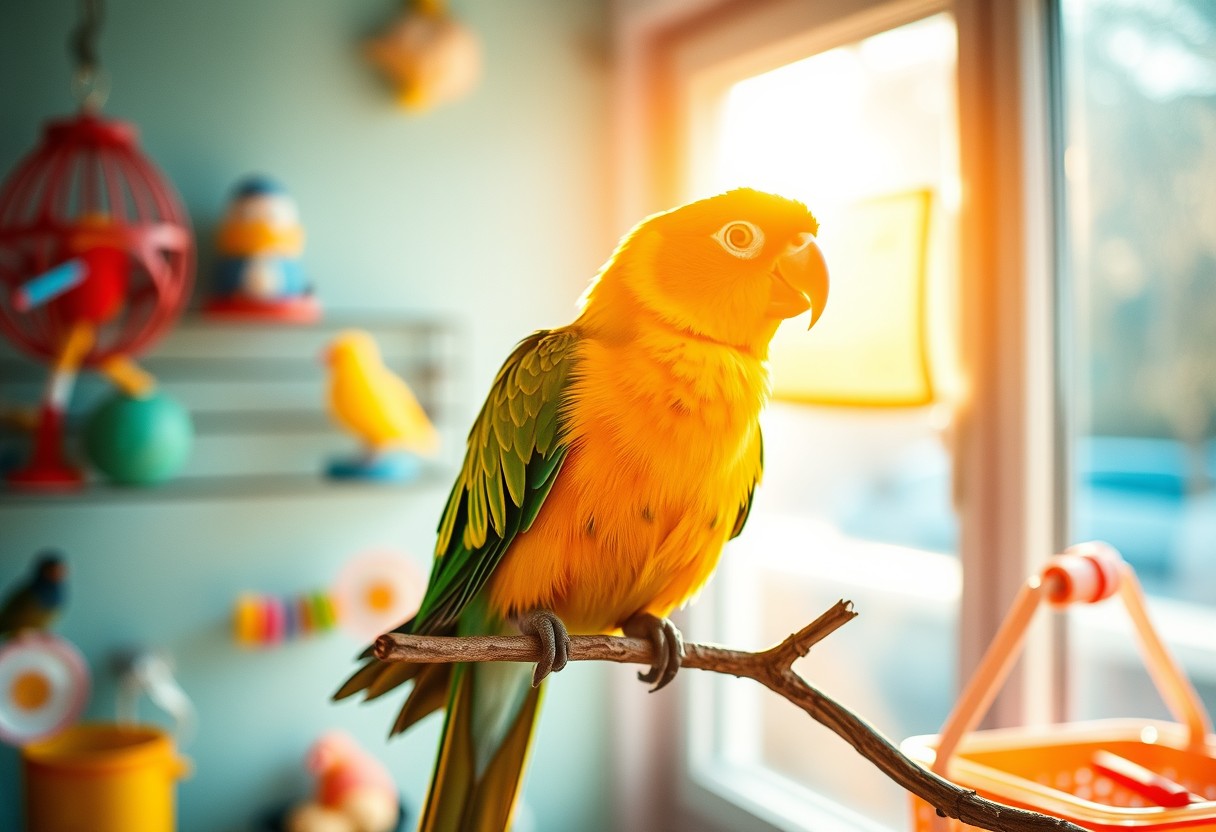
Natural Habitats and UV Exposure
For birds, the availability of UV light is an imperative aspect of their natural habitats. Understanding the importance of UV exposure is crucial for maintaining bird health and behavior. In their native environments, birds are adapted to specific levels of UV radiation, which contribute to their color vision, communication, and overall well-being. You may not realize it, but these levels of UV exposure can vary significantly between different ecosystems and geographical locations.
UV Light in Various Environments
An important consideration is that the intensity of UV light varies widely across diverse environments. For instance, birds in open, high-altitude regions typically receive more UV radiation than those in dense forests, where tree canopies filter much of the sunlight. In coastal areas, the reflection of UV light off the water can also enhance the levels that birds experience. Understanding these variances helps clarify why certain species exhibit more vibrant plumage and behaviors, as they have evolved under specific UV conditions tailored to their habitats.
Additionally, factors such as pollution and urbanization can also impact the amount of UV light that reaches birds in their habitats. You may find that birds in urban areas experience reduced natural UV exposure due to buildings and other structures obstructing sunlight. This alteration can influence their health and behaviors, making it crucial for bird enthusiasts and conservationists to pay attention to such factors.
Impact of Habitat Alteration
Any significant alteration in a bird’s habitat poses a risk to its health, especially regarding UV exposure. As natural spaces are converted into urban developments or altered through agriculture, the balance of light—including vital UV rays—can be disrupted. This disruption may affect birds’ ability to navigate, find food, and communicate with one another, thus altering their overall survival and reproduction.
Understanding these impacts is paramount, as it emphasizes the ripple effect that habitat degradation can have on bird health. If you consider how many birds rely on natural UV light for vital life functions, then the importance of maintaining healthy habitats becomes increasingly clear. Without proper access to these imperative wavelengths of light, birds can face challenges that compromise their health and wellbeing.
Seasonal Variations in UV Exposure
An often-overlooked aspect of bird health is the effect of seasonal changes on UV exposure. Different seasons can bring about significant shifts in the intensity and quality of UV light. For birds, these changes often correlate with critical life events, including migration, mating, and nesting periods. It’s imperative for you to recognize how these variations can influence bird behaviors and health across different times of the year.
Moreover, various species may have unique adaptations that allow them to cope with seasonal fluctuations in UV exposure. Some birds might alter their foraging habits or migrate to regions with optimum UV conditions during specific times of year. This seasonal adaptability highlights the intricate relationship between UV light and avian life, showcasing the profound effects that such variations can have on bird populations.
Light is not just a simple element of nature; it plays a pivotal role in the intricate ecosystems that birds inhabit. By appreciating the significance of seasonal variations in UV exposure, you can better understand the nuanced dynamics of bird health and behavior throughout the year. As a bird enthusiast or conservationist, it’s critical that you advocate for the preservation of natural habitats to ensure that these creatures can continue to thrive in their ever-changing environments.
Implications for Bird Care
Once again, it is crucial to understand the importance of UV light for your pet birds, particularly when they are kept in captivity. Unlike their wild counterparts who naturally bask in sunlight, captive birds often lack exposure to this important light source. This deficiency can lead to various health issues, ranging from poor feather quality to serious metabolic disorders. Therefore, as a responsible bird owner, you must implement strategies to ensure your feathered friends receive adequate UV light, contributing significantly to their overall well-being.
Supplementing UV Light in Captivity
Careful consideration should be given to how you can supplement natural UV light in your bird’s living environment. You might consider installing UV light bulbs specifically designed for birds, which emit UVB rays important for the synthesis of vitamin D3. This vitamin is crucial for calcium metabolism, helping to prevent conditions like osteoporosis and other calcium deficiency-related illnesses. Position these bulbs strategically to allow your birds to soak in the rays without them being too close or too far—generally a distance of 12-24 inches is recommended for effectiveness.
Additionally, it’s critical to monitor the exposure time. Just as too little UV light can be detrimental, too much can lead to overexposure issues, such as skin irritation or even burns. Regularly check the manufacturer’s guidelines for the bulb’s lifespan, as the intensity can diminish over time. Using a UV light timer can help you maintain a consistent exposure schedule, mimicking natural sunlight cycles and maintaining your birds’ health.
Choosing UV Light Systems for Aviaries
On your quest to provide the best conditions for your birds, the choice of UV light systems is paramount. There are several types of bulbs available on the market, including fluorescent and halogen lamps, each presenting unique benefits. When choosing a UV light system, opt for a full-spectrum UV bulb, which not only provides UVB rays but also mimics the full range of sunlight, aiding in better behavioral and physiological effects in birds.
It’s important to consider the size of your aviary and the number of birds you have to effectively plan the placement and type of UV light systems to ensure all your birds can benefit from exposure. Seeking guidance from avian professionals can help you decipher which specific systems would serve your party best. Be prepared to invest in quality fixtures that evenly distribute light throughout the enclosure, as well as to regularly replace the bulbs to maintain their efficacy.
Best Practices for Bird Health
For optimal bird health, integrating UV light into their care regimen is only one part of the equation. You should also focus on a balanced diet, which includes fresh fruits, vegetables, and high-quality pellets designed for your specific bird species. Regular veterinary check-ups are paramount to catch any health issues early and to ensure your birds are thriving. Further, it’s beneficial to provide enrichment activities and social interactions to support their mental well-being.
Plus, staying educated about your birds’ needs, including their requirement for UV exposure, can foster a more enriching environment. Being proactive in assessing their conditions and addressing any changes promptly will go a long way in ensuring that your feathered companions lead long, healthy lives. Also, consider networking with other bird owners to share insights and tips, which can enhance both your and your birds’ experiences.
Summing up
Taking this into account, understanding the role of UV light in bird health is crucial for any avian enthusiast or pet owner. By ensuring your birds have access to natural sunlight or UVB-emitting bulbs, you can significantly enhance their wellbeing. This exposure aids in the synthesis of vitamin D3, which is vital for calcium absorption and overall bone health. Moreover, providing adequate UV light can encourage natural behaviors, improve mood, and even support immune function, creating a healthier and more vibrant environment for your feathered friends.
Ultimately, prioritizing UV light in your bird care routine is not just about preventing deficiencies; it’s about enriching the lives of your pets. By taking steps to ensure they receive the proper light exposure, you are investing in their longevity and quality of life, which in turn allows you to enjoy a more fulfilling relationship with your birds. Therefore, be proactive in exploring your options and integrating appropriate UV solutions into their habitat to unlock the full spectrum of health benefits for your cherished companions.
Q: How does UV light benefit birds in terms of vitamin D synthesis?
A: UV light plays a crucial role in the synthesis of vitamin D3 (cholecalciferol) in birds, which is necessary for calcium metabolism and overall health. When birds are exposed to UVB rays from sunlight or specialized UV lamps, their skin can produce vitamin D3. This vitamin is vital for the absorption of calcium from their diet, helping to maintain strong bones, feather development, and reproductive health. Without adequate UV light exposure, birds may suffer from deficiencies that can lead to issues such as metabolic bone disease and weakened immune function.
Q: What are the dangers of insufficient UV exposure for pet birds?
A: Insufficient UV exposure for pet birds can result in various health problems. Without adequate UV light, birds are at risk of developing vitamin D3 deficiencies, which can lead to calcium deficiencies and related complications such as soft-billed fractures, weakened immune systems, and poor feather quality. Additionally, a lack of natural light can also contribute to behavioral issues, stress, and lethargy, potentially leading to decreased quality of life. It is crucial for pet owners to provide appropriate lighting that mimics natural sunlight so their birds can thrive and maintain optimal health.
Q: How can bird owners ensure their pets receive adequate UV light?
A: Bird owners can ensure their pets receive adequate UV light by providing access to natural sunlight or by using specially designed UV lighting for their enclosures. If using natural sunlight, owners should place the birdcage in a location that receives direct sunlight for a few hours a day, while ensuring that the bird can escape the rays if needed. If natural light is limited, UV lamps designed for birds should be used, providing both UVA and UVB rays. It is necessary to replace these bulbs regularly, as their effectiveness diminishes over time. Additionally, allowing birds to spend safe, supervised time outdoors can also boost their UV exposure and overall well-being.
